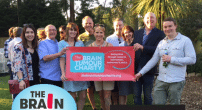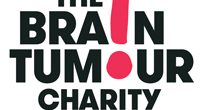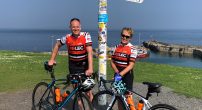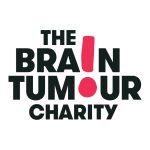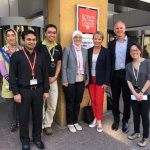The Big Relec Bike Ride – What you are funding
23rd May 2018The Big Relec Bike Ride 2018 – Kings College Research Facility Lab Tour
 Normally we like to send you just one newsletter per month, but this time we thought we would make an exception. As I’m sure most of you have seen by now, my partner Lesley and I are about to embark on a 14 day, 1100 mile bicycle journey from John O’Groats to Lands End. Our goal is to raise £10,000 for the brain tumour charity and to also raise wider awareness of this terrible disease. In fact by the time you read this we will probably be packing our bags for the journey north. Lesley and I recently had the opportunity to visit the school of cancer and pharmaceutical sciences at King’s college, London. The team, led by Professor Khuloud Al-Jamal are being funded directly by awards from the brain tumour charity which go towards ground breaking research into drug delivery. We thought you might like to know more about where the money raised by the Brain Tumour Charity gets spent. The article below gives you an overview of what we saw, but if you want more information there is a link at the bottom of the article to an in depth research paper.
Normally we like to send you just one newsletter per month, but this time we thought we would make an exception. As I’m sure most of you have seen by now, my partner Lesley and I are about to embark on a 14 day, 1100 mile bicycle journey from John O’Groats to Lands End. Our goal is to raise £10,000 for the brain tumour charity and to also raise wider awareness of this terrible disease. In fact by the time you read this we will probably be packing our bags for the journey north. Lesley and I recently had the opportunity to visit the school of cancer and pharmaceutical sciences at King’s college, London. The team, led by Professor Khuloud Al-Jamal are being funded directly by awards from the brain tumour charity which go towards ground breaking research into drug delivery. We thought you might like to know more about where the money raised by the Brain Tumour Charity gets spent. The article below gives you an overview of what we saw, but if you want more information there is a link at the bottom of the article to an in depth research paper.
If you would like to support us you can donate through our Just Giving page. All donations are very much appreciated and go towards some invaluable research.
There has been great progress in recent years in the development of new drugs and the CRISPR/Cas9 gene-editing tool is at the forefront of that development. CRISPR/Cas9 has been hailed as a revolution in genetic engineering. However, one of the major challenges in delivering this tool is overcoming the blood-brain barrier. Professor Al-Jamal and her colleagues are working to test the delivery of CRISPR/Cas9 using natural and synthetic nanocarriers, including needle-shaped structures called nanotubes. These nanocarriers can be tagged to carry the drugs directly to where they are needed. If successful, this drug-delivery technique could prove a new treatment option for brain tumour patients.
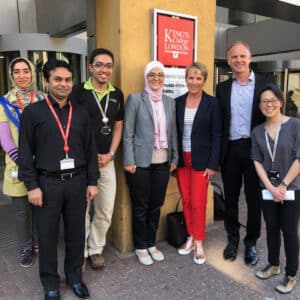
A tour of the labs of Professor Khuloud Al-Jamal gave us an insight into their research, which I found fascinating and I thought our engineering led readership might also. Professor Al-Jamal’s team is split into 5 main areas of research:
Preparation and purification of polymeric nanoparticles for the delivery of therapeutic drugs (Dr Muhammad Akhtar and Dr Yuan Lu)
Nanoparticles, as the name suggests, are typically sized between 1 and 200 nm (10-9m) in diameter. They are just the right size to carry drugs and proteins to the target site and are able to make their way across the blood-brain barrier effectively. Smaller particles get dispersed randomly throughout the body (leading to the death of healthy cells and unwanted side effects) and larger particles are unable cross the blood-brain barrier to reach their target. The team have been working with very thin graphene structures, which are shaped to form nanotubes onto which drugs and proteins can be grafted. These nanocarriers can be engineered to just target diseased cells and leave the healthy cells largely unaffected. The team have also been working on using the inherent magnetic properties of the tubes to keep the drugs in areas where they are most needed.
Nanoparticle Tracking Analysis (Mr Farid Faruqu)
An essential part of the research is ensuring that the nanoparticles and drugs find their way to their intended destination. Nanoparticle Tracking Analysis (NTA) research is looking at the ways nanoparticles scatter light that is shone onto them. By measuring the scattering and using mathematical modelling, the size and number of nanoparticles can be accurately estimated. The size of the nanoparticles will influence their successful delivery and retention, whilst the number of nanoparticles is important in determining the correct dose to be administered.
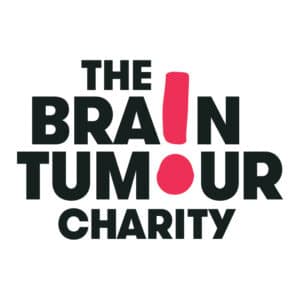 Targeted delivery through Exosomes (Dr Mohammad Daas)
Targeted delivery through Exosomes (Dr Mohammad Daas)
Exosomes are small, naturally-occurring nanocarriers produced and released by the majority of living cells. Due to their biological origin these vesicles are better tolerated by the body than synthetically derived nanocarriers. Exosomes can be replicated and genetically engineered to display a protein that targets a receptor that is highly enriched on the surface of brain tumour cells. This helps facilitate the entry of the loaded drug cargo into the target cell.
Real-time whole body imaging for preclinical disease progression monitoring and drug development (Dr Julie Wang)
If the dynamic changes in drug distribution in the body, together with the rates of tumour growth in animals can monitored in a non-invasive manner, far more meaningful results can be obtained without needlessly sacrificing lab animals. Drugs have now been formulated which display the properties of fluorescence, and tumour cells can be engineered to glow following the injection of a substrate. The optical signal given off, both by the drugs and the tumours indicate where the drugs are concentrated and also how the tumour is spreading / receding throughout the body. This technique can also be used with the magnetic nanocarriers described earlier to show how this helps to concentrate the drugs in the areas most needed.
Tissue Culture (Dr Adam Walters)
The tissue culture lab at King’s college grows cells in controlled conditions allowing the research team to work on a much wider variety of tumour cells. Cancer cells naturally grow given the right conditions. While this is an artificial environment it enables the team to study the basic behaviour of tumour cells and how drugs modify this behaviour without the need to move to more expensive animal studies.
Whilst I’m no chemist, from an engineer’s perspective I can equate what they are trying to achieve with my own experiences. If you would like to read a more in depth article about the research of Professor Khuloud Al-Jamal I’ve attached one here.
Hats off (or Chapeau as we say in the Peloton) to the entire team for all your dedication and I hope our fund raising efforts help make a meaningful difference.
Please stay in touch with our experiences on the ride which starts on 31st May and please feel free to drop me a mail. I’d love to hear from you. Of course we would also like your donations. There are links to our just giving page all over the blog or you can simply go to www.justgiving.com/fundraising/releccycleride
John Stone
Sales Director
Tel: 01929 555700
Email: sales@relec.co.uk
www.relec.co.uk / sales@relec.co.uk
sign up for our newsletter
Enter your email address below
LET’S MAKE THIS EASY. CALL 01929 555 700
why choose relec?
-
Faster
Our aim is to get back to you with an initial response within the hour.
-
Attention to detail
We pride ourselves on getting you the right product, at the right price and on time.
-
New ideas
We are constantly looking for latest technology and products for your applications.
-
Beyond standard
It’s not just about the product. Our service goes way beyond the norm.
-
Easy
We want to make your life as simple as it can be. Call us to find out what we can offer.

